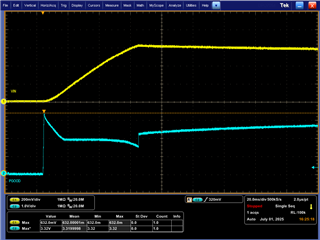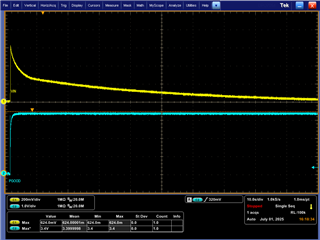Tool/software:
Hello. In my application I use VIN=2.5V, and PGOOD pulled up to 3.3V rail, trough 10kOhm resistor. My 3.3V rail is enabled much earlier than the 2.5V.
I noticed that my disabled 2.5V rail is back-powered, and charged up to ~620mV from PGOOD pin. Voltage on PGOOD also indicates current being drawn.
I attach a scope screenshot.
Can you please confirm that there is some kind of ESD or clamping circuit between PGOOD and VIN pins? This is not mentioned in datasheet. Absolute maximum rating for PGOOD is 6.5V and recommended max. is 3.5V.
Thank you,
Rafal




